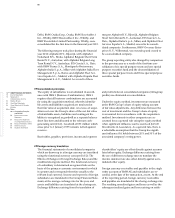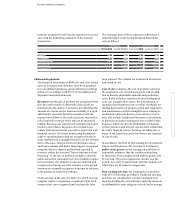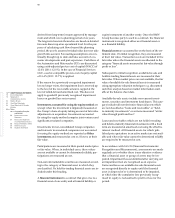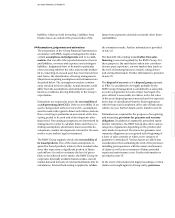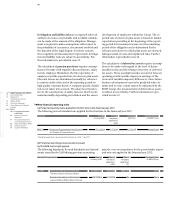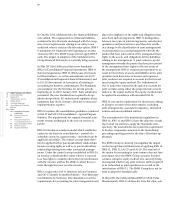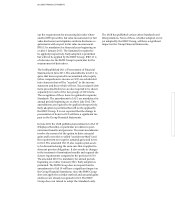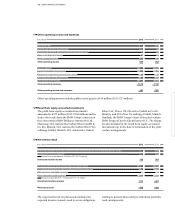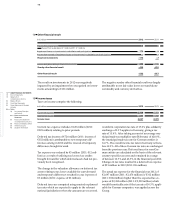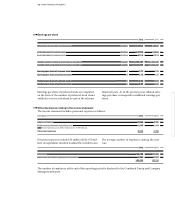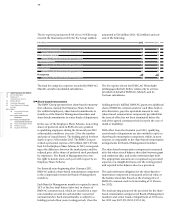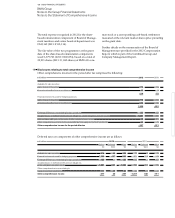BMW 2012 Annual Report Download - page 98
Download and view the complete annual report
Please find page 98 of the 2012 BMW annual report below. You can navigate through the pages in the report by either clicking on the pages listed below, or by using the keyword search tool below to find specific information within the annual report.
98
78 GROUP FINANCIAL STATEMENTS
78 Income Statements
78 Statement of
Comprehensive Income
80 Balance Sheets
82 Cash Flow Statements
84 Group Statement of Changes
in Equity
86 Notes
86 Accounting Principles
and Policies
100 Notes to the Income
Statement
107 Notes to the Statement
of Comprehensive Income
108
Notes to the Balance Sheet
129 Other Disclosures
145 Segment Information
In October 2010, additional rules for financial liabilities
were added. The requirements for financial liabilities
contained in IAS 39 remain unchanged with the excep-
tion of new requirements relating to an entity’s own
credit risk when it exercises the fair value option. IFRS 9
is mandatory for financial years beginning on or after
1 January 2015. The BMW Group will not apply IFRS 9
early. The impact of adoption of the Standard on the
Group Financial Statements is currently being assessed.
In May 2011 the IASB issued three new Standards –
IFRS 10 (Consolidated Financial Statements), IFRS 11
(Joint Arrangements), IFRS 12 (Disclosure of Interests
in Other Entities) – as well as amendments to IAS 27
(Consolidated and Separate Financial Statements) and
to IAS 28 (Investments in Associates) all relating to
accounting for business combinations. The Standards
are mandatory for the first time for annual periods
beginning on or after 1 January 2013. Early adoption is
permitted. The new Standards are required to be ap-
plied retrospectively. EU endorsement stipulates a later
mandatory date (from 1 January 2014) due to increased
implementation expense.
IFRS 10 replaces the consolidation guidelines contained
in IAS 27 and SIC-12 (Consolidation – Special Purpose
Entities). The requirements for separate financial
state-
ments remain unchanged in the revised version of
IAS 27.
IFRS 10 introduces a uniform model which establishes
control as the basis for consolidation – control of a
subsidiary entity by a parent entity – and which can be
applied to all entities. The control concept must there-
fore be applied both to parent-subsidiary relationships
based on voting rights as well as to parent-subsidiary
relationships arising from other contractual
arrange-
ments. Under the control concept established in IFRS 10,
an investor controls another entity when it is exposed
to or has rights to variable returns from its involvement
with the investee and has the ability to affect those re-
turns through its power over the investee.
IFRS 11 supersedes IAS 31 (Interests in Joint Ventures)
and SIC-13 (Jointly Controlled Entities – Non-Monetary
Contributions by Ventures). This Standard sets out the
requirements for accounting for joint arrangements and
places the emphasis on the rights and obligations that
arise from such arrangements. IFRS 11 distinguishes
between two types of joint arrangements, namely joint
operations and joint ventures, and therefore results
in a
change in the classification of joint arrangements.
A joint operation is a joint arrangement whereby the
parties that have joint control of the arrangement have
rights to the assets, and obligations for the liabilities,
relating to the arrangement. A joint venture is a joint
arrangement whereby the parties that have joint control
of the arrangement have rights to the net assets of
the arrangement. IFRS 11 requires joint operators to ac-
count for their share of assets and liabilities in the joint
operation (and their share of income and expenses).
Joint venturers are required to account for their
invest-
ment using the equity method. The withdrawal of
IAS 31 means the removal of the option to account for
joint ventures using either the proportionate consoli-
dation or the equity method. The equity method must
be applied in accordance with amended IAS 28.
IFRS 12 sets out the requirements for disclosures relating
to all types on interests in other entities, including
joint
arrangements, associated companies, structured
entities and unconsolidated entities.
The amendments to the transitional regulations in
IFRS 10,
IFRS 11 and IFRS 12 have the objective of mak-
ing it easier for entities to apply the Standards
retro-
spectively. The amendments also restrict the requirement
to disclose comparative amounts to the immediately
preceding reporting period at the date of first-time ap-
plication.
The BMW Group is currently investigating the impact
on the Group Financial Statements of applying IFRS 10,
IFRS 11, IFRS 12, IAS 27 and IAS 28. The removal of
the
option for accounting for joint ventures does not have
any impact since the BMW Group accounts for joint
ventures using the equity method. It is currently being
investigated whether any joint ventures will be required
to be reclassified as joint operations as a result of the
introduction of IFRS 11. The BMW Group does not in-
tend
to adopt the Standard early.
In May 2011 the IASB published IFRS 13 (Fair Value
Measurement). IFRS 13 defines the term fair value, sets


